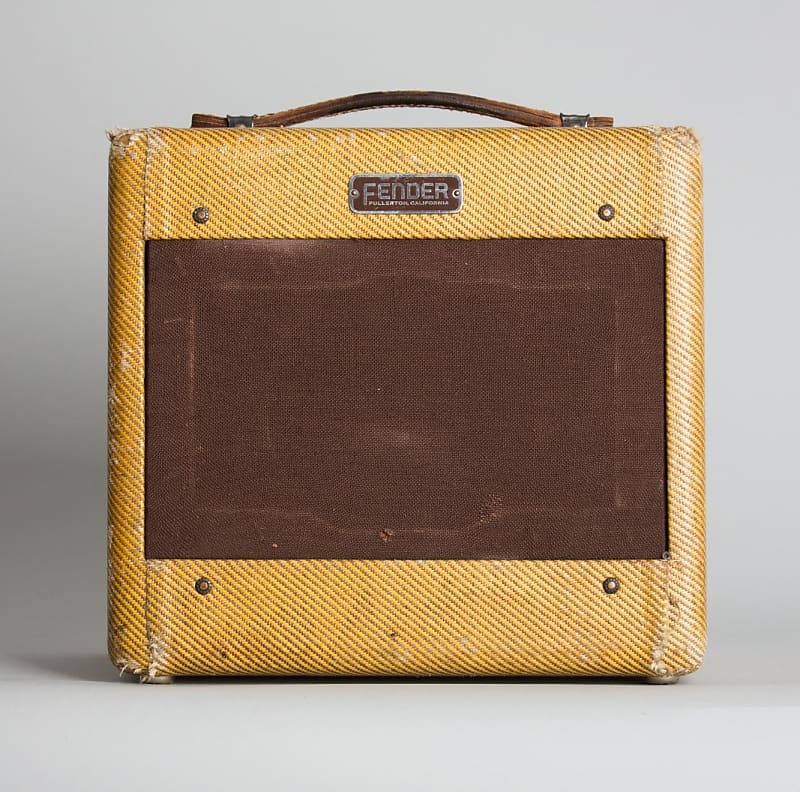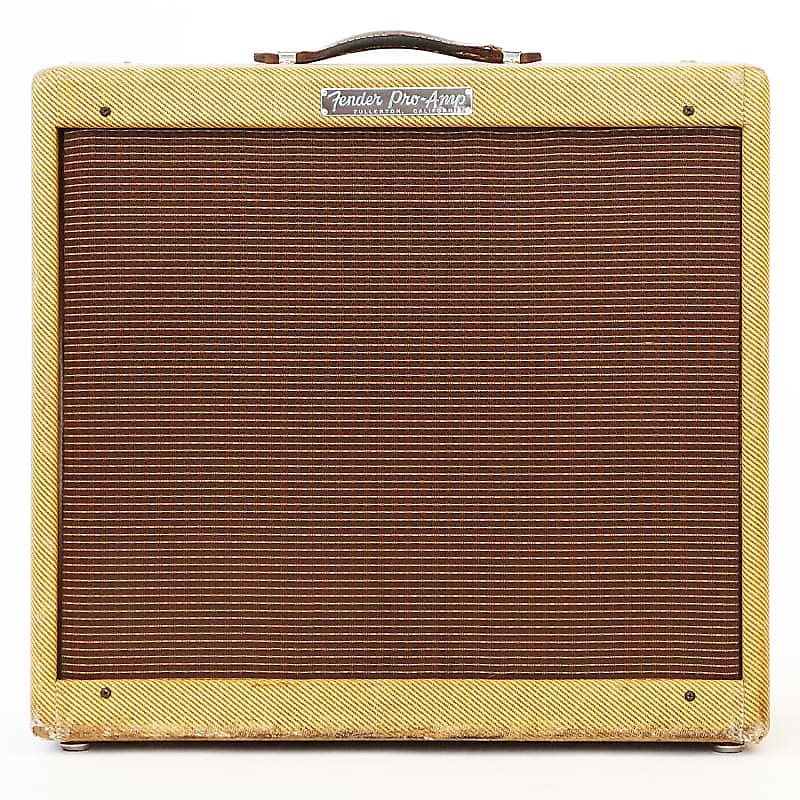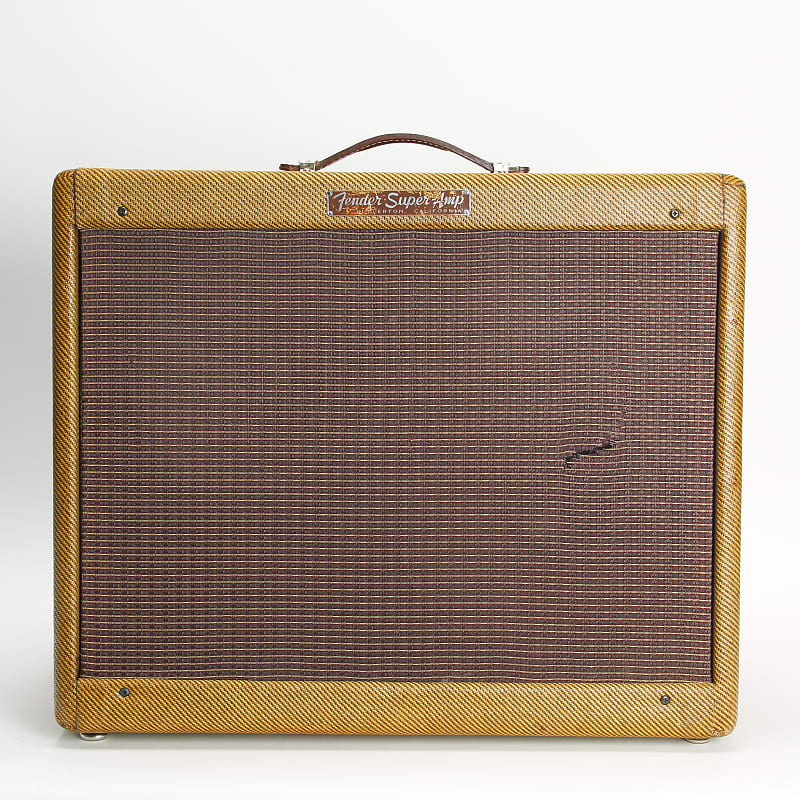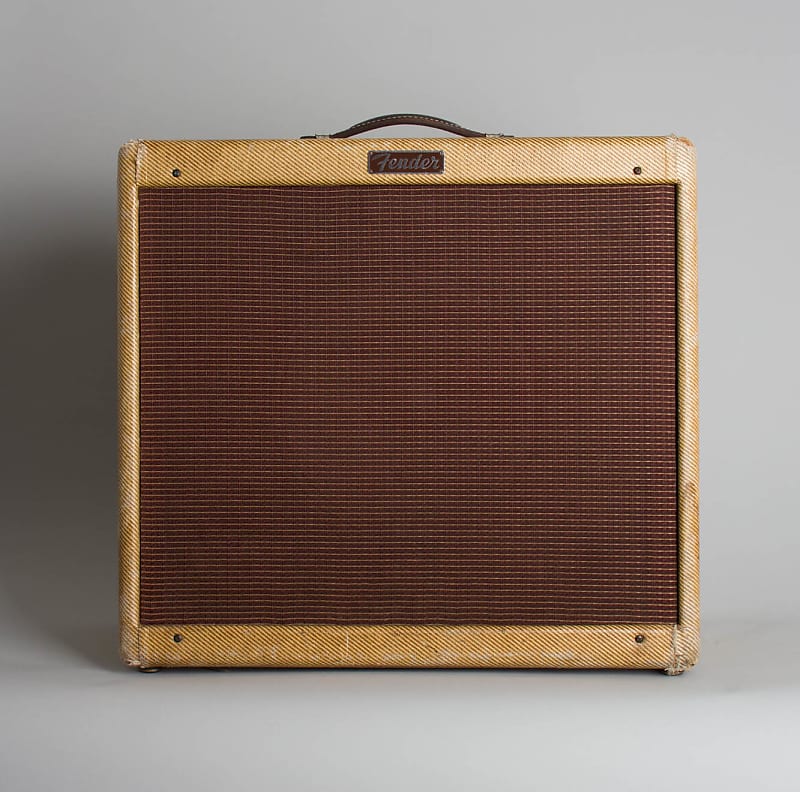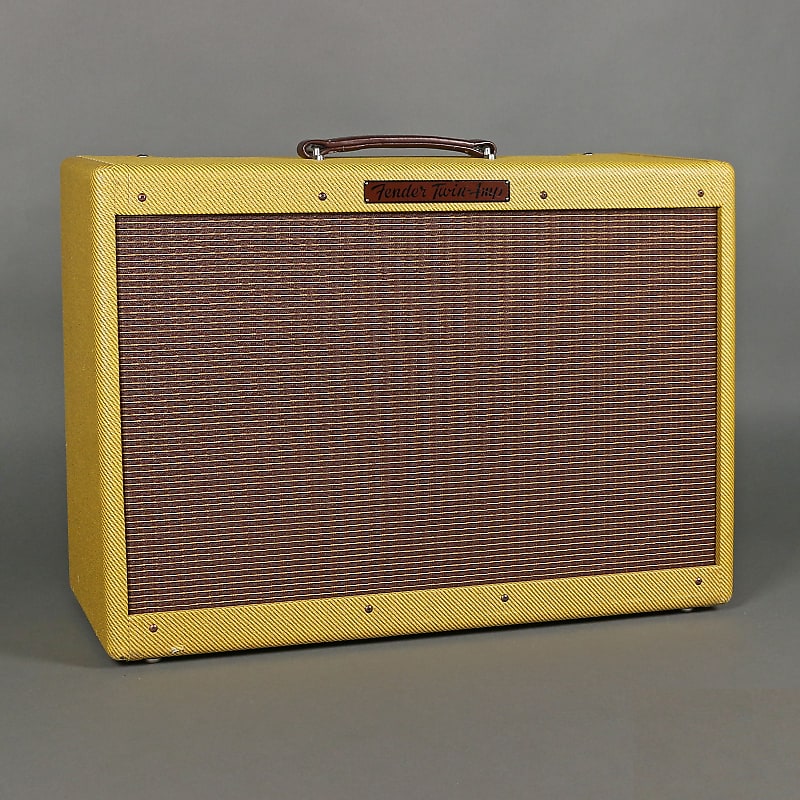Several classic tube amps have long been established as archetypes. They are casually referred to in conversation, reissued in relatively accurate form, and adapted and modified as the foundations of many production and boutique amplifiers on the market.
And yet, the characteristics that have made them so iconic are rarely laid bare in plain English.
Defining the Classics will present clear, easily digestible, in-a-nutshell guides to the handful of guitar amplifiers that have justifiably been deemed “classic" over the years. The objective is to help you discern exactly what someone is getting at when they declare that a particular amp has “black panel-like cleans," "Marshall-esque crunch," or "Boogie-inspired lead tones."
In short, this mini-series presents a handy little tool to help young players, noobs, or anyone just getting into the big, beautiful world of tube amps to better walk the walk and talk the talk. This installment will cover a template that many players and amp makers regard as the very foundation of the modern guitar amplifier: the Fender tweed.
Guitar amps were on the market for nearly two decades before Leo Fender’s creations of the 1950s, but these designs redefined what was expected of a professional amplifier. Their sonic and constructional qualities continue to resonate in a surprising number of products that are still being manufactured today.
Defining "Tweed"
The term "tweed" is often used to refer to a broad spectrum of vintage amps, many that are even made by manufacturers other than Fender.
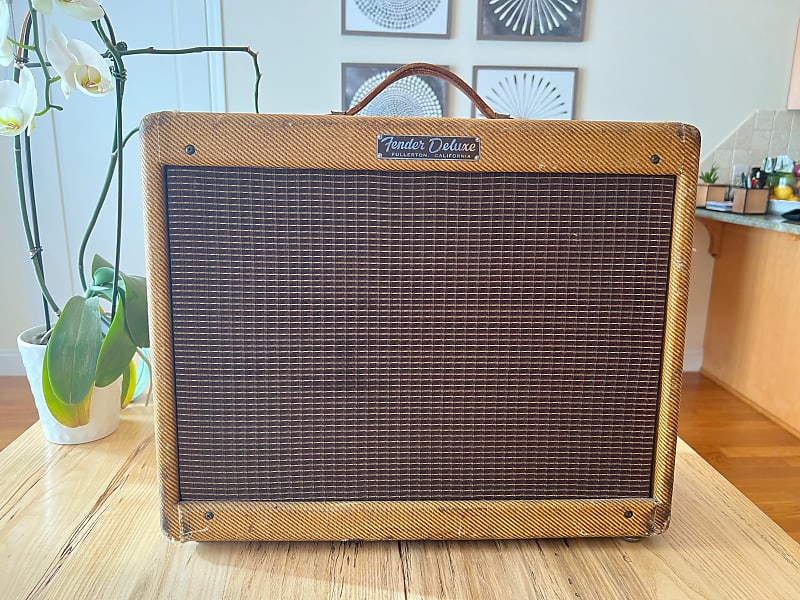
Strictly speaking, the term refers to the aircraft-luggage-grade linen covering used on Fender amps from around 1949 (although it was first seen on the Dual Professional in 1947), but is generally narrowed down to the amps of the 1950s.
For most players, however, the archetypal Fender tweed amps are the so-called "narrow-panel" models (named for the narrower upper and lower edges of the cabinet’s front face), which were manufactured during the period between late 1955 and 1960.
The narrow-panel tweed Fenders not only represent the look that most often comes to mind when “tweed amp" is mentioned, but they also embody the later circuit evolutions for each of the most significant models.
The Tweed Mystique
Aside from being collectible in good original condition and rather expensive on the vintage market, tweed amps (as defined above) are widely regarded as just sounding great. They have earned a reputation, justifiably so in most cases, for being amps that you can plug straight into to achieve world-class tones that fit beautifully into a surprisingly broad range of genres.
These amps are marked by the richness of their clean tones, although they are often noted for not having a lot of headroom. To that end, they are often also highly prized for the ease with which they segue into juicy slightly-overdriven sounds. Perhaps most importantly, they deliver natural compression, dynamics, and touch-sensitivity—that all-important “playing feel."
These amps’ cranked-up tones don’t achieve the high-gain sounds that a modern metal or heavy rock player might demand, but they do nail a superbly rich lead tone that is loaded with harmonic overtones, perfect for classic rock and blues, and many contemporary genres.
For that matter, their clean tones generally aren’t as crispy and immaculate as those of later respected amps, but do often contain the kind of depth and richness—as well as that slight edge and hair—that make a clean tone sound extra succulent and feel extremely playable.
The Classics
Several models throughout Fender’s ’50s range deserve the label "classic." In truth, every one of the models produced in that era is highly desirable.
Some command higher prices than others on the vintage market due to the laws of supply and demand, while a few are supremely sought-after due to their low production numbers and/or the fact that they might have greater star-player associations than others.
Even if you know little to nothing about Fender’s tweed amps, you’re still likely to have heard of the Deluxe (circuit 5E3) and the Bassman (circuit 5F6-A).
The Deluxe is a 1x12" combo with two 6V6 output tubes, capable of about 15 watts, with two volume controls and just a simple shared tone control. The Bassman is a 4x10" combo that produces around 45 watts from two 6L6s, with treble, bass and middle controls in its comprehensive tone stage, plus a presence control.
Both are among the most revered tone machines ever made, exemplary of the “small tweed" and “large tweed" sounds, respectively. The Deluxe breaks up extremely easily, sounding delightfully raw and raucous in the process. The Bassman holds it together up to impressive sound-pressure levels, at which point it transitions into toothsome, dynamic overdrive.
Going even smaller, the 4-watt Champ and Princeton are also classics in their own right.
In between, at around 18 watts, the 1x15" Pro and 2x10" Super are highly desirable, while the 3x10" Bandmaster has attained rare-as-hen’s-teeth collectible status. The "low-powered" 2x12" Twin also hovers above the pack for lustworthiness.
Each of the latter four has roughly the same circuit, differing primarily in its speaker complement.
Of the bunch, the Pro is usually the most affordable to obtain. The lower-mid-sized 10-watt Vibrolux and 15-watt Tremolux both carry the tremolo effect that helped to name them, while the mammoth 80-watt “high powered" Twin of 1958–’60 has recently become the most sought-after tweed amp of all.
Essential Ingredients
So what makes a tweed a tweed?
Part of these amps’ magic simply comes from the vision that Leo Fender and his cohorts brought to their design and construction. Their namesake wanted them to sound great, to be built to survive the rigors of the road, and to be easy to repair when necessary.
As a result, these were arguably the best amps being produced at the dawn of rock ’n’ roll, but they also appealed greatly to country, jazz, and blues players alike. In the mid-sized and larger tweed amps, the highly interactive two- and three-knob tone stages with their cathode-follower tube drivers are responsible for part of the tactile touch sensitivity that players rave about.
The circuits behind these amps have a wonderful capacity for being very forgiving, and for inspiring you to play. All but the larger Bassman and high-powered Twin had a split-load phase inverter that was prone to its own distortion, giving these amps a raw, snarly bite even at semi-clean and transition-to-overdrive levels.
The two big boys, on the other hand, had a firmer long-tailed-pair inverter that stayed tighter right up to the end, presenting a bolder, punchier voice that enhanced clean tones and cut beautifully through the mix, while retaining better note definition even when pushed into overdrive.
On top of these arguably esoteric elements, these amps were simply built with great components. Even while trying to balance the bottom line, Fender used transformers, resistors and capacitors of a quality level that’s difficult to acquire today.
The cabinets themselves, and the speakers in them, also played a big part. The narrow-panel design fixed the speaker baffle (the plywood board to which the speaker is mounted) only lightly at the top and bottom of the cab.
The result: when one of these amps gets cooking, the entire cabinet—the rest of which is made of light pine—begins to resonate and sing, contributing to the lively nature of the amp as a whole. The alnico Jensen speakers loaded into them also sound stunning, presenting the perfect marriage of sweet, crisp cleans and reedy, vocal overdrive tones.
Early Outliers
While the amps of the latter half of the decade present our primary definition of “tweed," early models can also sound great.
Many of these amps were made with octal (that is, eight-pin) preamp tubes, rather than the nine-pin preamps tubes like the 12AX7 and 12AY7 that the narrow-panel tweeds and many amps today use. These can add some thickness and warmth to the tone, characteristics that are often enhanced by earlier circuit iterations themselves.

As archaic as they might look, the “TV-front" tweeds of the late ’40s and early ’50s and “wide-panel" tweeds of the early to mid ’50s can still sound surprisingly clear and lively when played clean. However, they do generally issue a more compressed, blues-certified breed of lead tone when pushed hard.
While many early tweeds are popular, the angle-fronted Dual Professional of 1947 (which later evolved into the 2x10" Super) is the most desirable pre-’50s Fender amp. Billy F. Gibbons of ZZ Top owns several, often using them to nail his signature tone in the studio.
Notable Players
The diversity of the tweed-players roster is a testament to these amps’ impressive versatility.
Buddy Guy frequently used a cranked Bassman to generate his sizzling blues tones, while Pearl Jam’s Mike McCready often used the same model to generate some of the most distinctive guitar parts of the grunge era. Pete Townshend laid down many of his most notable guitar tracks from 1971’s Who’s Next onward on a 1959 Bandmaster (a gift from Joe Walsh).
Bruce Springsteen did much of his best playing of the ’70s through a tweed Bassman. Eric Clapton has long been a tweed fan. He used diminutive Champs for many of his notable studio tracks of the early ’70s. A tweed Twin is his amp of choice today.
And Joe Bonamassa, probably the most influential modern bluesman of all, "moved up" from vintage Marshalls and Dumbles to using two each of tweed Twin and Bassman combos on tour.
Reissues, Modern Counterparts & How To Get Tweed Tone Today
Whether rejuvenated in straight-reissue form, or disguised in the circuits of otherwise very different-seeming modern amps, elements of the tweed mystique continue to thrive today.
Jim Marshall and his associates of the early ’60s used Fender’s 5F6-A Bassman circuit as the basis for their debut model, the JTM45. The design evolved relatively slightly into the Marshall Plexi models later in the decade, albeit with fairly dramatically-evolved results. But vintage JTM45s with that Tweed-like character can still be had on the used market today.
Players can also look to more modern equivalents to get the Tweed sound without having to shell out for a really old vintage specimen that might require a lot of TLC. Staying on brand, Fender has reissued several renditions of its classics from the ’50s—some straight up, others with modifications—that can regularly be found for around or under $1,000.
Boutique options abound as well. Brands like Victoria are definitely worth a look, as they've built out a full catalog of their own version of Tweed-inspired amps, giving players lots of different flavors to choose from. Tungsten, Louis Electric, Clark, and others have done similar things—you can explore more of those choices in-depth here.
Essentially, plug into any 40-watter today with two 6L6s, a three-knob tone stack, and a presence control, and you can bet there’s some Bassman DNA in there. Likewise, you’d be hard pressed to find a dual-6V6-based combo with just volume and tone controls that doesn’t owe a little something to the beloved tweed Deluxe.



